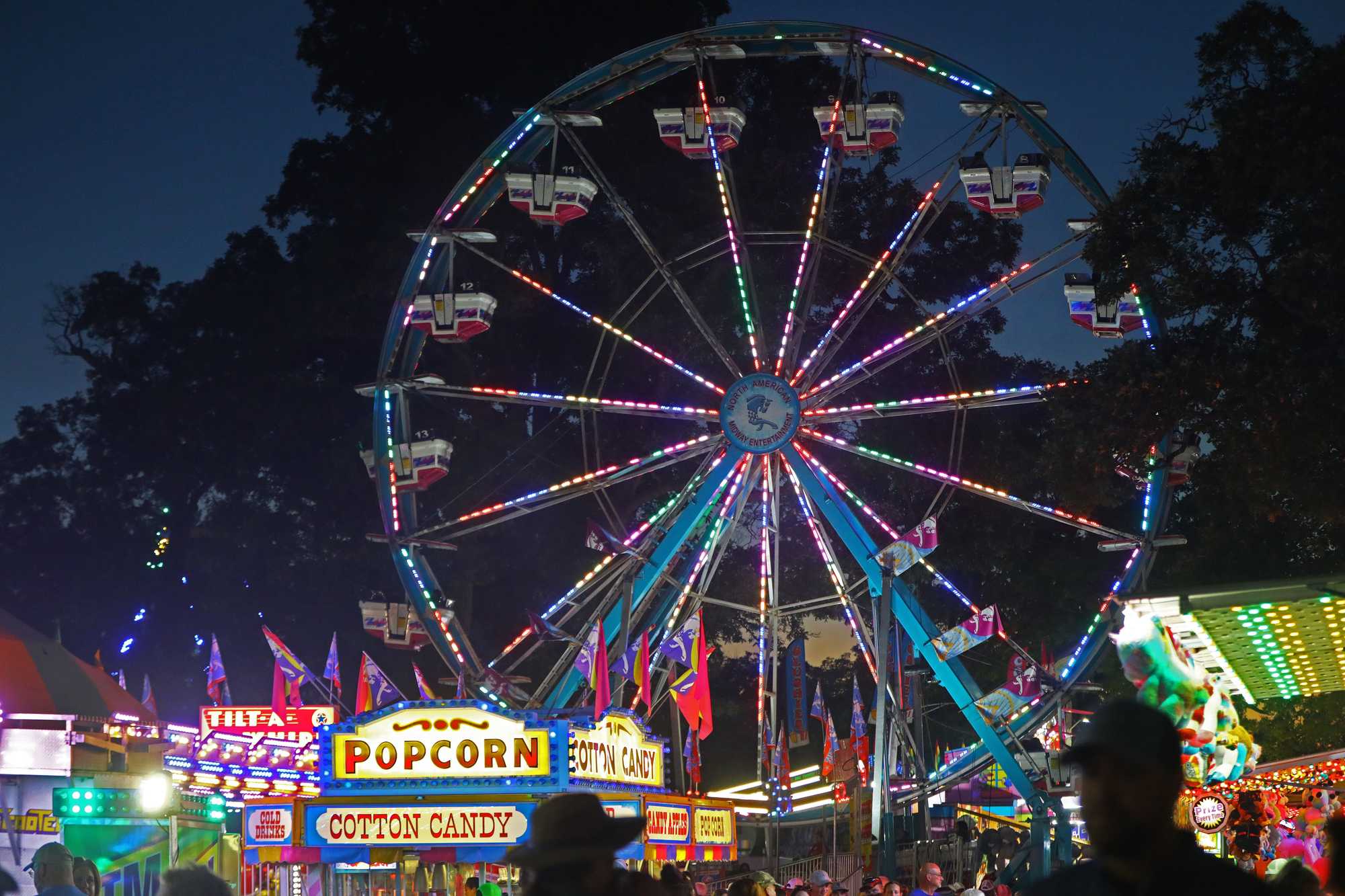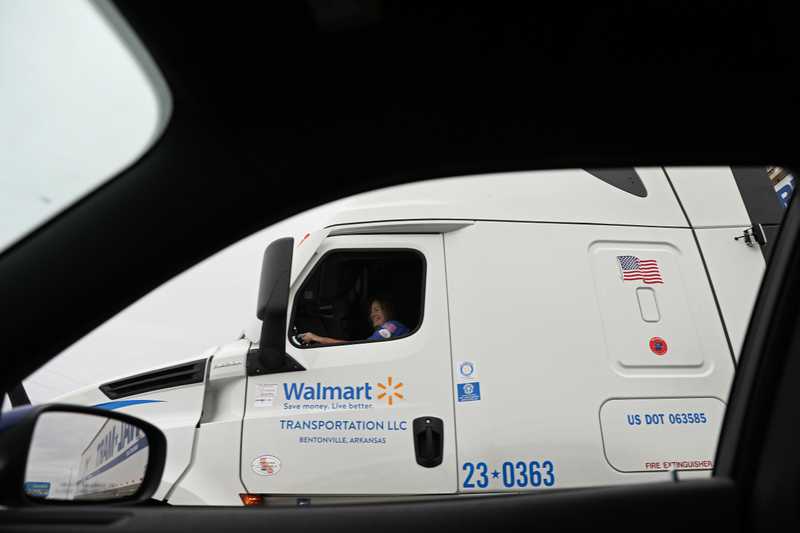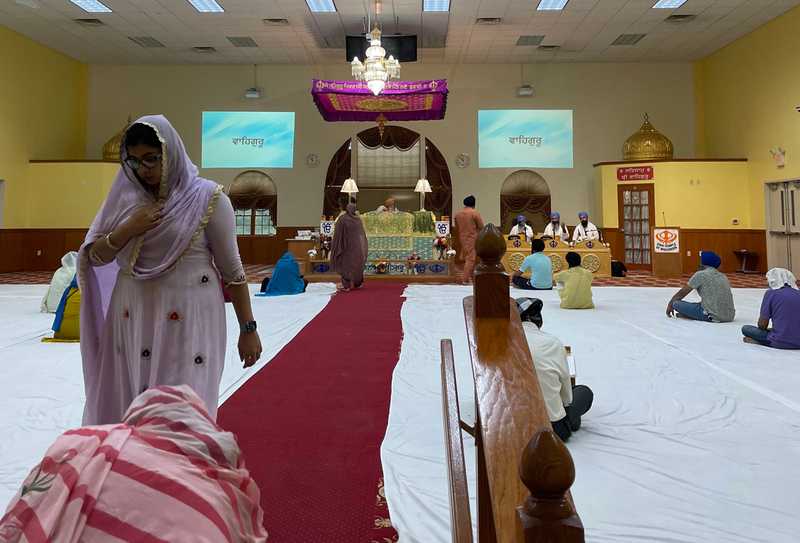Boston team
Nov. 1, 2022
Anatomy of a county fair truck pull

SANDWICH, Ill. — Over the bleats of the animals and the shrieks of the children on rides, one sound dominates the county fair: The deafening din of the truck pull.
Multi-ton vehicles with multiple engines barrel down a 350-foot track, competing to get farthest while hauling a load of tens of thousands of pounds. Plumes of diesel smoke fill the sky. Boy Scouts in jean shorts sell earplugs and popcorn.
Started in the 1950s as an informal competition between farmers, truck pulling has grown into a full-fledged sport. Drivers travel across states and pour a quarter-million dollars (or more) into custom-built vehicles to amp up their power. Winning offers a modest purse, but major bragging rights.

How does a truck pull work — from the starting lurch to the finish line? We asked announcer Larry Richwine, a longtime competitor himself.
TAKEOFF
During takeoff, drivers build “boost” on the throttle, sending dark smoke overhead.
“So they’re actually building boost when you see them and the smoke turns black … it’s getting all the fuel it can get. They still have to release the clutch to let the vehicle go forward. And consequently, they’re trying to build as much power so when they do let go of the clutch fully, it’s [HAND CLAP] gone.”
THE SLED
A mechanical sled slides forward as the truck moves, steadily putting more weight on the vehicle’s back wheels and slowing it down.
“The weight transfer machine — we call it a sled. But it progressively gets heavier as it goes down the track through a set of gears. The one axle on the sled is gear-driven, moves the weight forward….. and then makes more heavy on the end of the chain. But it gets heavier as it goes down the track, consequently stopping the vehicle.”
STRATEGY

There’s no formal training for truck pulling. The strategy — for going the farthest, not the fastest — is up to each driver.
“Momentum is energy forward, you know? So if they get a good run, and get some momentum going, [it] seems like the guy that has the best ground speed will go the furthest to win. Some guys will just hammer it and hope it goes and hooks up. Some guys will progressively get into the throttle as it goes down the track. There’s many schools of thought on that, and there’s no exact science.”
AN INDESCRIBABLE FEELING
The 15-to 20-second adrenaline-fueled drive is an unrivaled high, competitors say. Crowds cheer as the mounting pressure of the sled stops the truck.
“Honest to god, it’s like the sound of it. The seat-of-your-pants type driving. Once these guys know what they’re doing, they can close their eyes and drive. That’s just the feel of it. It’s hard to explain.”
CELEBRATE
Officials smooth the track for the next competitor. At the end of the night, winners celebrate their modest purse.
“It’s a fun, competitive, family oriented sport. And I couldn’t think of anywhere else I’d rather be. All I can say is, if they like noise and dirt, they need to come watch it.”


Join the discussion: Comment on this story.
Credits
- Reporters: Julian Benbow, Diti Kohli, Hanna Krueger, Emma Platoff, Annalisa Quinn, Jenna Russell, Mark Shanahan, Lissandra Villa Huerta
- Photographers: Erin Clark, Pat Greenhouse, Jessica Rinaldi, and Craig F. Walker
- Editor: Francis Storrs
- Managing editor: Stacey Myers
- Photo editors: William Greene and Leanne Burden Seidel
- Video editor: Anush Elbakyan
- Digital editor: Christina Prignano
- Design: Ryan Huddle
- Development: John Hancock
- Copy editors: Carrie Simonelli, Michael Bailey, Marie Piard, and Ashlee Korlach
- Homepage strategy: Leah Becerra
- Audience engagement: Lauren Booker, Heather Ciras, Sadie Layher, Maddie Mortell, and Devin Smith
- Newsletter: LaDonna LaGuerre
- Quality assurance: Nalini Dokula
- Additional research: Chelsea Henderson and Jeremiah Manion
© 2022 Boston Globe Media Partners, LLC


